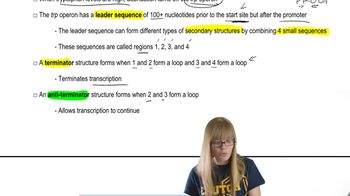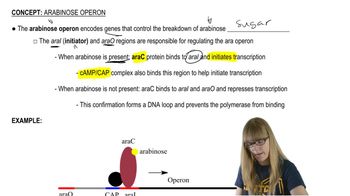Here are the essential concepts you must grasp in order to answer the question correctly.
Attenuation
Attenuation is a regulatory mechanism in prokaryotic gene expression that controls transcription termination. It occurs in operons, where the formation of specific RNA structures in the leader sequence can lead to premature termination of transcription. For example, in the trp operon of E. coli, high levels of tryptophan promote the formation of a terminator structure, halting transcription, while low levels allow for the formation of an anti-terminator structure, enabling transcription to proceed.
Recommended video:
Operon
An operon is a cluster of genes under the control of a single promoter, allowing for coordinated expression of genes that often encode proteins with related functions. In prokaryotes, operons enable efficient regulation of gene expression in response to environmental changes. The classic example is the lac operon in E. coli, which is activated in the presence of lactose and repressed when glucose is available.
Recommended video:
Transcriptional Regulation
Transcriptional regulation refers to the mechanisms that control the rate of gene transcription, determining how much of a gene's product is produced. This regulation can involve various factors, including transcription factors, enhancers, silencers, and RNA structures like those involved in attenuation. Effective transcriptional regulation is crucial for cellular responses to environmental signals and maintaining homeostasis.
Recommended video:




